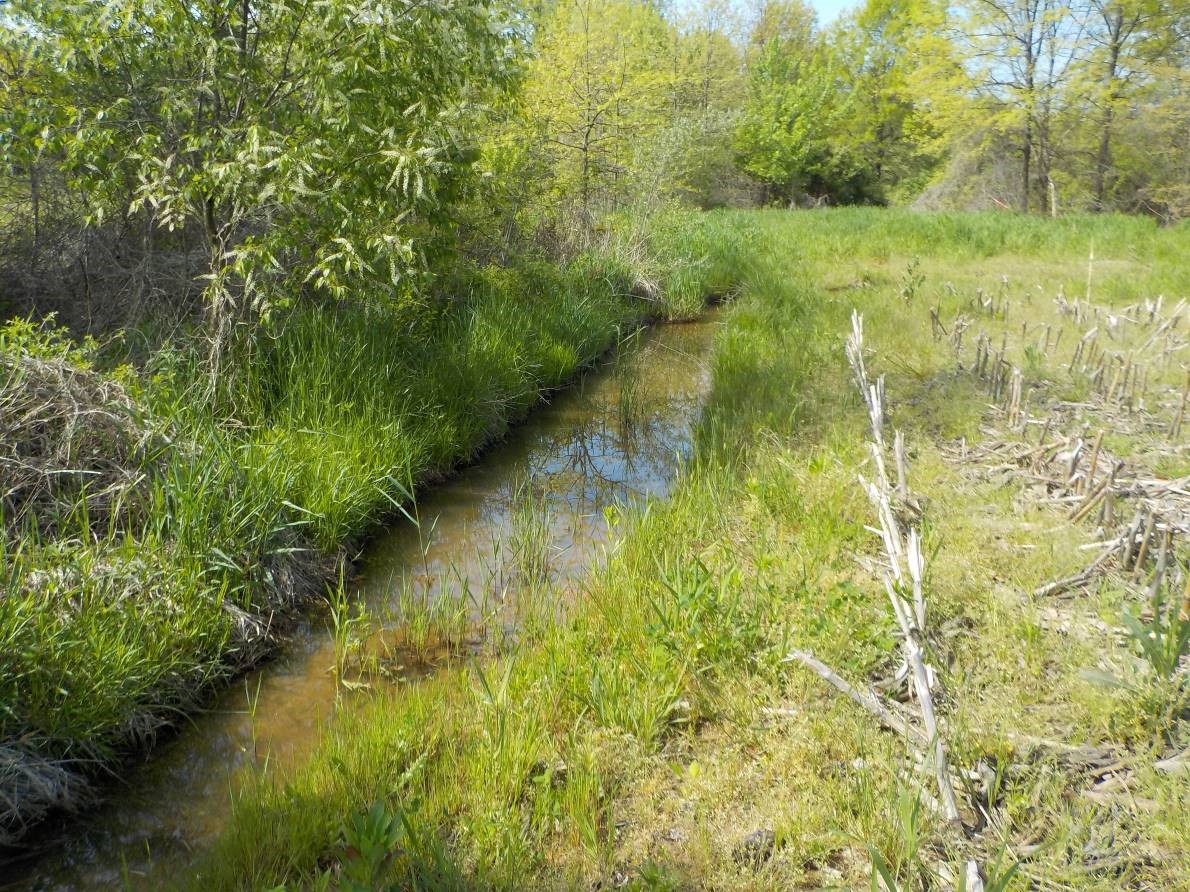
INDUSTRY TRENDS
Ten Things to Know About the Wetlands and Waterways Permit Updates in Ohio
January 19, 2017 | WRITTEN BY: Carmen
Written by: Joyce Marzano, Senior Ecologist
 Even small agricultural waterways can be regulated features
Even small agricultural waterways can be regulated features
State and Federal agencies are issuing new regulations regarding wetland and water permits. If your project involves dredging or discharging into waterways or wetlands, here are 10 things you should consider before starting your project:
- The federal Clean Water Act (CWA) requires anyone discharging dredged or fill material into waters in the United States (wetlands, streams or lakes) to obtain a permit from the U.S. Army Corps of Engineers (USACE) pursuant to Section 404.
- If you apply for a 404 permit through USACE, you also must obtain a Water Quality Certification through Ohio Environmental Protection Agency (EPA) pursuant to Section 401 of the Clean Water Act.
- Activities typically requiring 404 permits and 401 certification include: culverting streams, stream crossings, bank stabilization activities and filling wetlands, but many others could also qualify.
- If your project meets the specific Ohio EPA conditions of a USACE Nationwide Permit, a general Water Quality Certification may be granted. However, if specific conditions are not met or the work will be performed in waters with a special designation, a project-specific Individual Section 401 certification will be needed. If your project will result in minimal impact, a Director’s Authorization (that is, a variance from Individual 401 requirement) can be sought.
- The USACE Nationwide Permits are being reissued, effective March 19, 2017. If you currently have been granted a 404 permit, it may still be valid after March 19, 2017, through March 19, 2018, if certain conditions are met. You should double-check with the USACE to confirm the conditions for continuation of your permit are met for your project.
- Ohio EPA updated the 401 rules pertaining to 401 submittals and procedures, effective January 2, 2017. The Ohio EPA also proposed modifications to 401 certifications for Nationwide Permits, tentative effective date March 19, 2017.
- These proposed 401 modifications for the Nationwide Permits include a Stream Eligibility Map, and three categories are identified: a) eligible areas (Individual 401 or Director’s Authorization generally not required), b) ineligible areas (projects affecting high quality streams and undesignated streams draining directly to high quality streams where an Individual 401 or Director’s Authorization is required), and possibly eligible (Individual 401 or Director’s Authorization may or may not be required, additional field screening is needed).
- Ohio EPA also developed a fee structure for issuing 401 Water Quality Certifications. Fees are associated with an Individual 401 Water Quality Certification and depend on amount of proposed impact, based on linear foot of impacted stream and/or acre of wetland. Pursuant to the proposed 401 modifications, the Section 401 Director’s Authorization will require a flat $2,000 review fee.
- Individual 401 Water Quality Certifications require public notice with the opportunity for public comment and even possibly a public hearing.
- The USACE will take action to either approve or deny a Nationwide Permit within 45 days of receipt of a complete application. The Ohio EPA will take action to either approve or deny an Individual 401 within 180 days (and a Director’s Authorization within 90 days) of receipt of a complete application. The Ohio EPA will review applications for completeness within 15 days of submittal. The new rules indicate that if the Ohio EPA fails to respond within 15 days, the application is considered complete.
BONUS INFO: Ohio EPA is developing a certified professional program for stream and wetland assessments in support of 401 applications. The program is being developed to provide efficiencies to the 401 process and would reduce turnaround times if individual 401 applications or Director’s Authorization requests are submitted by certified persons. More details on the certified professional program are available through Ohio EPA at http://epa.ohio.gov/dsw/401/cwqp.aspx.
 A forested wetland can be dry during extended periods of the growing season. An experienced wetland delineator should perform an assessment of the property early during the project planning phase
A forested wetland can be dry during extended periods of the growing season. An experienced wetland delineator should perform an assessment of the property early during the project planning phase
RELATED TAGS:
[xyz-ips snippet=”comment-form”]




